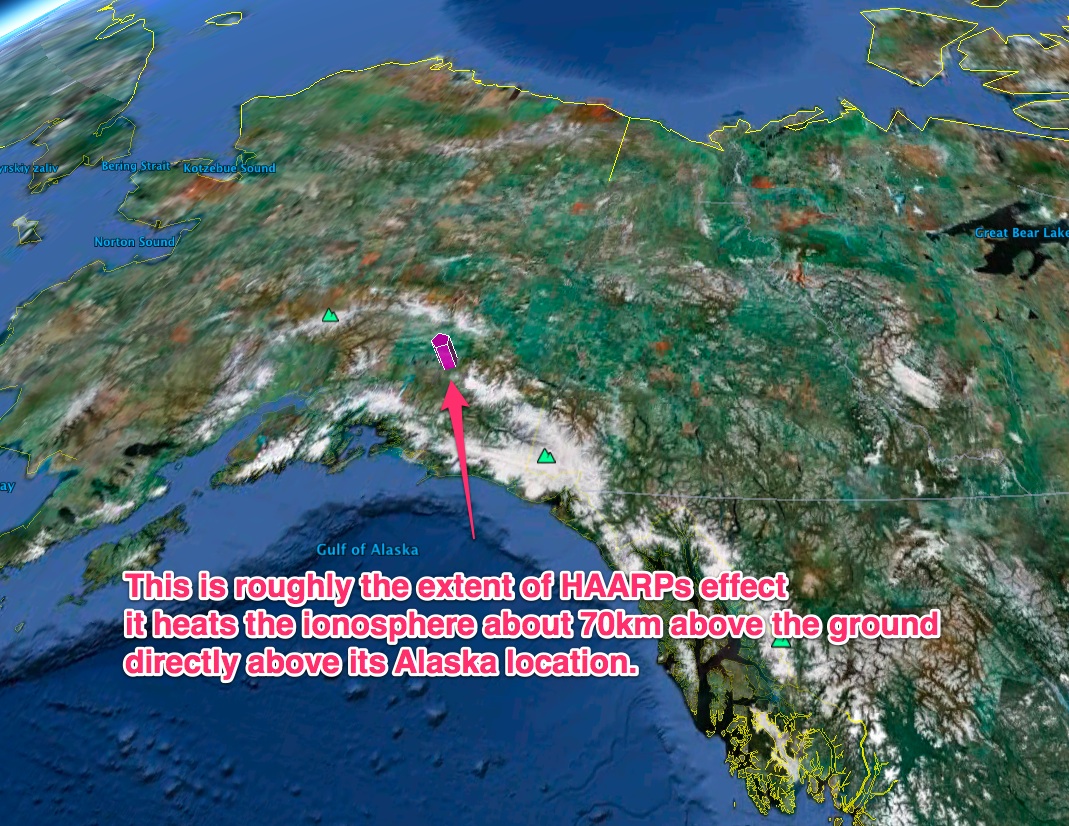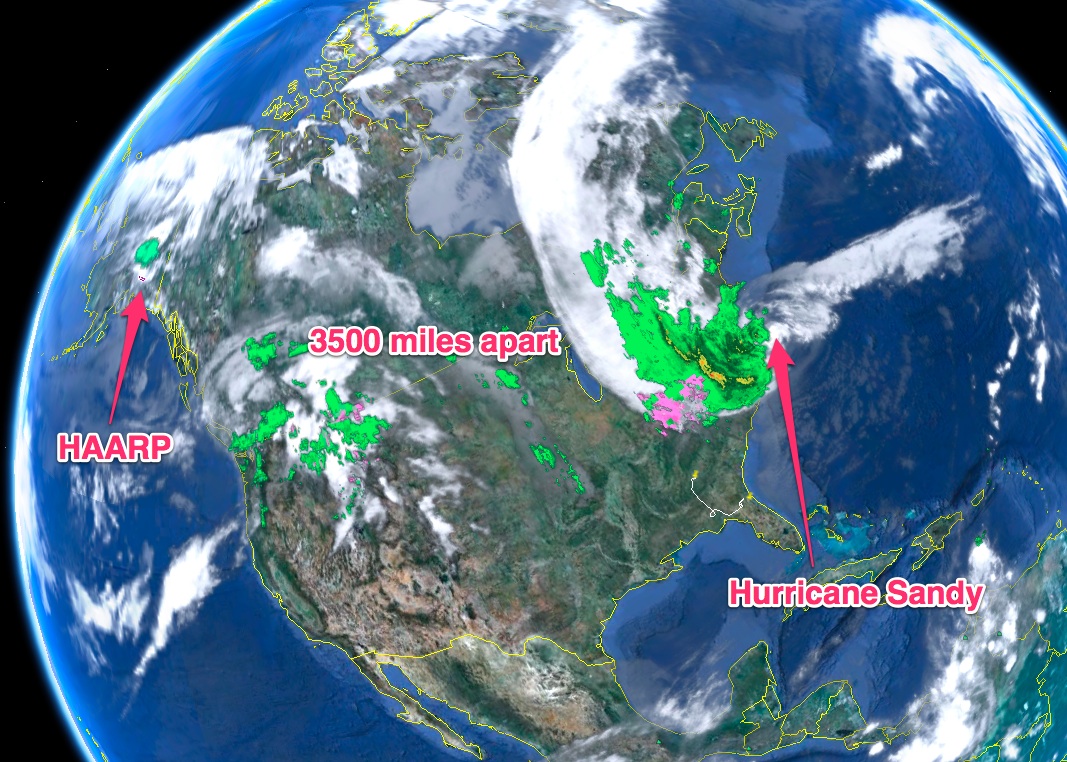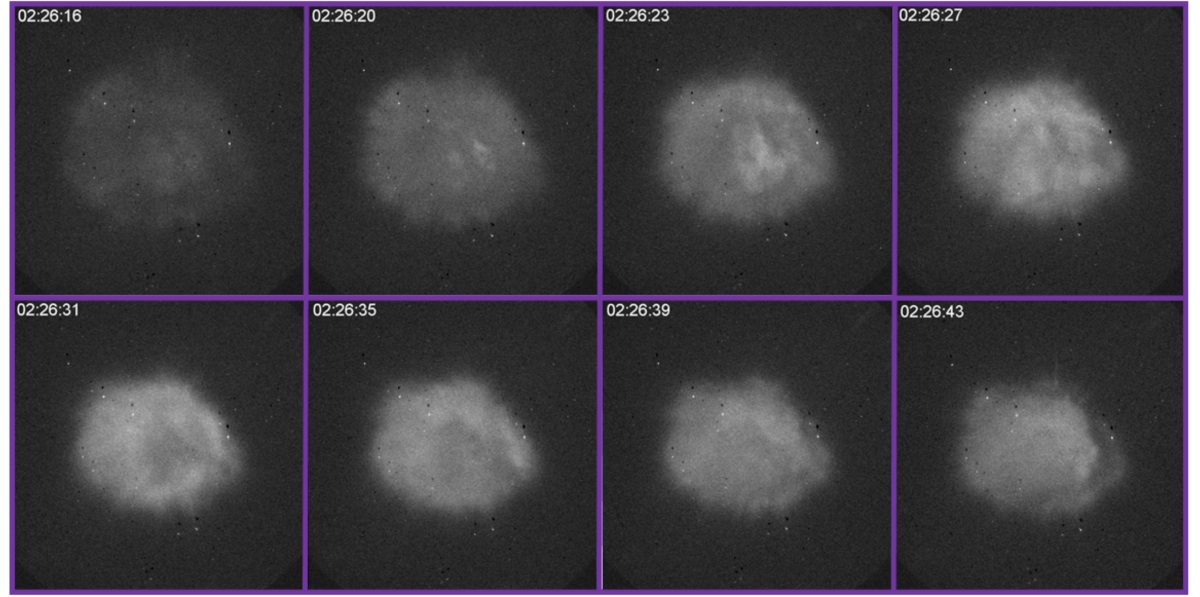HAARP is a favorite target for conspiracy theorists. It's an easy target because the science behind it is rather difficult to understand and even harder to explain to people with no background in science. So I'm starting this thread to:
A) Gather useful resources that can help explain what HAARP actually does and how it does it
B) Explain why HAARP can NOT do the various things that are claimed (change the weather, create earthquakes, mind control).
First a very brief attempt at an understandable explanation of what HAARP does:
(obviously still not very understandable of most non-scientific people)
The first places to start is the official HAARP web site and FAQ. Here I've bolded the key numbers
[Updated Aug 2018 with new web site]
https://www.gi.alaska.edu/haarp/frequently-asked-questions-faq
The following comes from the old web site:
https://web.archive.org/web/20130518010959/http://www.haarp.alaska.edu/haarp/tech.html
https://web.archive.org/web/20130202021127/http://www.haarp.alaska.edu/haarp/ion4.html
https://web.archive.org/web/20130116094952/http://www.haarp.alaska.edu/haarp/factSheet.html
(https://web.archive.org/web/20130330214012/http://www.haarp.alaska.edu/haarp/ion5.html)
A) Gather useful resources that can help explain what HAARP actually does and how it does it
B) Explain why HAARP can NOT do the various things that are claimed (change the weather, create earthquakes, mind control).
First a very brief attempt at an understandable explanation of what HAARP does:
About 60 miles up the atmosphere is very thin. The radiation from the sun here is so powerful it knocks electrons off the air molecules creating an ionized layer called the ionosphere. HAARP is square grid of antenna that transmit radio waves straight up. The radio waves are absorbed by the electrons in the ionosphere. This heats them up slightly (but a lot less than the normal heat from the sun). HAARP does not affect the 60 miles of atmosphere below the ionosphere. Scientists do experiments by heating a small patch of the ionosphere in various ways and observing the results. They do this mostly because variations in the ionosphere affect radio communication, and they want to study this so they can improve radio communication.
(obviously still not very understandable of most non-scientific people)
The first places to start is the official HAARP web site and FAQ. Here I've bolded the key numbers
[Updated Aug 2018 with new web site]
https://www.gi.alaska.edu/haarp/frequently-asked-questions-faq
What Is HAARP?
The High-frequency Active Auroral Research Program (HAARP) is the world’s most capable high-power, high frequency (HF) transmitter for study of the ionosphere. The principal instrument is the Ionospheric Research Instrument (IRI), a phased array of 180 HF crossed-dipole antennas spread across 33 acres and capable of radiating 3.6 megawatts into the upper atmosphere and ionosphere. Transmit frequencies are selectable in the range of 2.7 to 10 MHz, and since the antennas form a sophisticated phased array, the transmitted beam can take many shapes, can be scanned over a wide angular range and multiple beams can be formed. The facility uses 30 transmitter shelters, each with six pairs of 10 kilowatt transmitters, to achieve the 3.6 MW transmit power.
What Is HAARP Used For?
The goal of the research at HAARP is to conduct fundamental study of the physical processes at work in the very highest portions of our atmosphere, called the thermosphere and ionosphere. This research falls into two categories (1) active, which requires the use of the Ionospheric Research Instrument and (2) passive, which only uses monitoring instruments.
The ionosphere starts at about 60 to 80 km altitude and extends up above 500 km altitude. There are free electrons and ions in the ionosphere that radio waves can interact with. HAARP radio waves heat the electrons and create small perturbations that are similar to the kinds of interactions that happen in nature. Natural phenomena are random and are often difficult to observe. With HAARP, scientists can control when and where the perturbations occur so they can measure their effects. In addition, they can repeat experiments to confirm the measurements really show what researchers think they do.
The following comes from the old web site:
https://web.archive.org/web/20130518010959/http://www.haarp.alaska.edu/haarp/tech.html
A more detailed explanation, with more key facts, is found here:During active ionospheric research, the signal generated by the transmitter system is delivered to the antenna array, transmitted in an upward direction, and is partially absorbed, at an altitude between 100 to 350 km (depending on operating frequency), in a small volume a few hundred meters thick and a few tens of kilometers in diameter over the site. The intensity of the HF signal in the ionosphere is less than 3 microwatts per cm2, tens of thousands of times less than the Sun's natural electromagnetic radiation reaching the earth and hundreds of times less than even the normal random variations in intensity of the Sun's natural ultraviolet (UV) energy which creates the ionosphere. The small effects that are produced, however, can be observed with the sensitive scientific instruments installed at the HAARP facility and these observations can provide new information about the dynamics of plasmas and new insight into the processes of solar-terrestrial interactions.
https://web.archive.org/web/20130202021127/http://www.haarp.alaska.edu/haarp/ion4.html
Details of the actual power use:The effects of this added energy are limited to a small region directly over the HAARP observatory ranging in size from 9 km in radius to as much as 40 km in radius.
It is important to realize that HAARP interacts only with charged (or ionized) particles in a limited region of the ionosphere directly over the facility. Interaction occurs because a charged particle (electron or positive ion) will react to an external electric field. HAARP does not interact with the neutral atoms and molecules that make up the bulk of the gas at all atmospheric heights. Neutral (non-ionized) particles, which outnumber ionized particles by 500:1 or greater, remain unaffected.
Effects produced by HAARP are thermal in nature and do not result in new ionization. HAARP is not able to produce artificial ionization for the following two reasons.
- The frequencies used by the HAARP facility are in the High Frequency (HF) portion of the spectrum. Electromagnetic radiation in the HF frequency range is non-ionizing - as opposed to the sun's ultraviolet and X-ray radiation whose photons have sufficient energy to be ionizing.
- The intensity of the radiation from the completed HAARP facility at ionospheric heights will be too weak to produce artificial ionization through particle interactions. The power density produced by the completed facility will not exceed 3 to 4 microwatts per cm2, about two orders of magnitude below the level required for that process.
https://web.archive.org/web/20130116094952/http://www.haarp.alaska.edu/haarp/factSheet.html
More helpful facts:Basically, the IRI is what is known as a phased array transmitter. It is designed to transmit a narrow beam of high power radio signals in the 2.8 to 10 MHz frequency range. Its antenna is built on a gravel pad having dimensions of 1000' x 1200' (about 33 acres). There are 180 towers, 72' in height mounted on thermopiles spaced 80' apart in a 12 x 15 rectangular grid. Each tower supports near its top, two pairs of crossed dipole antennas, one for the low band (2.8 to 8.3 MHz), the other for the high band (7 to 10 MHz). The antenna system is surrounded by an exclusion fence to prevent possible damage to the antenna towers or harm to large animals. An elevated ground screen, attached to the towers at the 15' level, acts as a reflector for the antenna array while allowing vehicular access underneath to 30 environmentally-controlled transmitter shelters spaced throughout the array. Each shelter contains 6 pairs of 10 kW transmitters, for a total of 6 x 30 x 2 x 10 kW = 3600 kW available for transmission. The transmitters can be switched to drive either the low or high band antennas. Electric prime power is provided from an on-site power plant housing five, 2500 kW generators, each driven by a 3600 hp diesel engine. Four generators are required for operation of the IRI and the fifth is held as a spare. From a control room within the Operations Center, the transmission from each of the 180 crossed-dipole antennas is adjusted in a precise manner under computer control. In this manner, the complete array of antennas forms a narrow antenna pattern pointed upward toward the ionosphere. The transmitted signal diverges (spreads out) as it travels upward and is partially absorbed, at an altitude which depends on the transmitted HF frequency, in a small volume several tens of miles in diameter and a few hundred meters thick directly over the facility. The remainder of the transmitted signal either reflects back toward the earth or passes through the ionosphere into space, continuing to diverge as it does so. By the time it reaches the ionosphere, the intensity of the HF signal is less than 3 microwatts (0.000003 watt) per cm2, thousands of times less than the Sun's natural electromagnetic radiation reaching the earth and hundreds of times less, even, than thevariations in intensity of the Sun's natural ultraviolet (UV) energy which creates the ionosphere.
(https://web.archive.org/web/20130330214012/http://www.haarp.alaska.edu/haarp/ion5.html)
The last bit is rather an exaggeration, as the most powerful radio station ever, Radio XERA, was less than 1.0 MW (far in excess of what is allowed now for radio transmission), and TV towers only get into the hundreds of kilowatts.The IRI would transmit radio waves over the frequency range 2.8 to 10 MHz. The transmitted radio wave beam would occupy a conical volume roughly 30 miles in diameter at an altitude of 300 miles. The transmitted radio waves would have up to 3.3 MW of power, only slightly higher than waves transmitted by radio and television stations.
Last edited:




